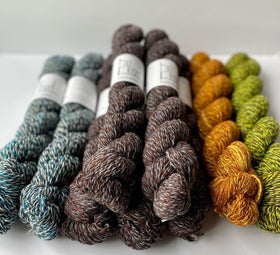
Two books about knitting that are not about knitting
by Meg Dedolph
I’m sure you’ve heard the joke that buying yarn and knitting are different hobbies, and also that buying books and reading are different hobbies.
Well, just as I periodically decide I’m going to finish projects and knit from stash, I also periodically decide that I’m going to read books I already own. I’m up to the books I bought on a family trip to Maine two summers ago, and I was delighted to find out I had accidentally bought a book about knitting.
Adam Savage, a special effects designer you might remember from the TV show “Mythbusters,” wrote “Every Tool’s a Hammer: Life is What You Make It.” While his projects are often sci-fi movie props and require epoxy and machining, and my projects … do not, he made some great points that I think makers of all sorts would appreciate.
My favorite chapter was when he talked about how he often makes the same thing over and over and over until he gets it to look exactly the way he wants it to. Sound familiar? Repetition is part of the creative process and it’s part of the learning process too. Remind yourself of this the next time you cast something on for the 17th time.
(Also, he wrote a great chapter about all the different kinds of glue and what they’re best for, and even though glue and knitting don’t mix, this is information I think everyone can use.)
The other book, which is also not really about knitting, is “This is Not A Book About Benedict Cumberbatch,” by Tabitha Carvan. It’s subtitled “The joy of loving something - anything - like your life depended on it,” and it is about women and the things they love.
It’s about being a big fan of something, or someone, and what that means to moms and wives and women generally.
Unlike Adam Savage, Carvan mentions knitting, though briefly. It’s worth thinking about, especially if you’re a woman.
She refers to another book, by Brigid Schulte, where Schulte describes the idea of “invisible leisure.”
Carvan writes: “This is what she calls the productive, socially sanctioned activities like quilting bees, canning parties, knitting circles and book groups, which are, she says, truly ‘the only kind of acceptable and industrious leisure time most women have ever known.’”
True leisure, Carvan says, has more to do with how you feel when you’re engaging in your activity.
“When it happens, pure leisure should feel like play, not work.”
So whether it’s reading, or casting on a sock for the seventh time, trying to get the cuff just right, I hope you find some moments of pure leisure this summer.




Comments
Leave a comment